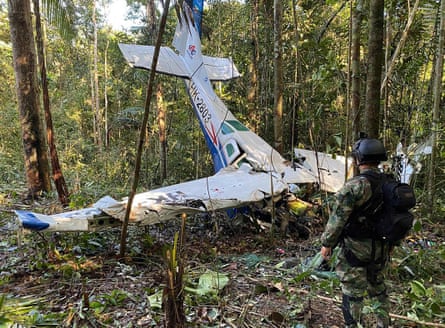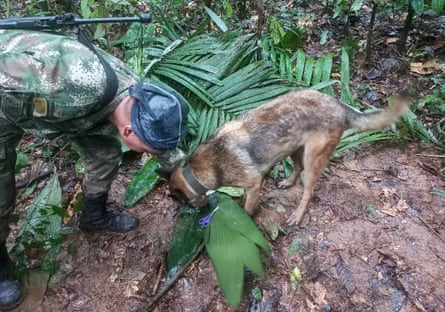Malnourished and covered in insect bites, four Indigenous children were rescued alive from the Colombian Amazon on Friday afternoon, 40 days after the plane they were travelling in crashed into the jungle.
In a remarkable feat of resilience, the children survived heavy storms in one of the most inhospitable parts of the country, home to predatory animals and armed groups.
“They’ve given us an example of total survival that will go down in history,” said Colombian president Gustavo Petro, calling it “A joy for the whole country!”
The four siblings, aged 13, nine, four plus an 11-month-old baby, were from the Huitoto Indigenous community. Although malnourished, none of the children were in serious condition, even the youngest child, who spent his first birthday in the jungle.
It is thought they survived by eating food survival kits airdropped into the jungle by the search team but the education they received from their grandmother may also have been vital, said John Moreno, an Indigenous leader from nearby Vaupes.
“This is a virgin forest, thick and dangerous … and they would have used the knowledge they gained in the community, the ancestral knowledge, in order to survive,” he told local media outlet Cambio.
The children have since been transported to the town of San Jose de Guaviare for health checks and psychological assessments.
The four siblings were aboard a Cessna 206 flying from the town of San Jose de Guaviare to Araracuara, in Amazonas province on the morning of 1 May when its pilot issued a mayday alert due to engine failure.
Two weeks later the aircraft was found, nose planted deep in the jungle floor in the province of Caquetá, 175km south of San Jose de Guaviare. Three adult bodies, including that of the children’s 33-year-old mother, were discovered at the site, but no sign of the children.
In the days that followed a glimmer of hope emerged. Around 500 metres from the crash site, search teams found footprints, chewed fruits and used nappies. The rescue effort, named Operation Hope, was quickly ramped up, eventually encompassing 150 soldiers and 200 volunteers from local Indigenous communities as well as a team of 10 Belgian shepherd dogs, covering an area of over 323 sq km (125 sq miles). The search continues for Wilson, one of the dogs, which disappeared during the operation.
The search team conducted multiple sweeps from the air, attaching a long-range speaker to a helicopter on which they played a message from the children’s grandmother, in the Huitoto language, telling them the search was underway and to stay where they were.
The children were on the move, however – they were found with their feet wrapped in strips of cloth – and this complicated the search. Initial hopes of finding the children alive were rapidly diminishing. The search team came across abandoned camps of rebel groups and some of the search team withdrew due to the end of a ceasefire with another group in the region. The number of flights were scaled back and the combined command post in San Jose de Guaviare disbanded.

But two days before their discovery, Brigadier General Pedro Sanchez said he still believed the children were alive and that the difficulty finding them was due to their movement through the forest. “This isn’t a needle in a haystack, it’s a tiny flea in a rug, because they keep moving,” he told local press, “but if, God forbid, they were dead we would have already have found them, because they would be still.”
Around 5pm on Friday, the army radio crackled with shouts of “Miracle! Miracle! Miracle! Miracle!” A group of 10 soldiers and eight Indigenous volunteers had discovered a fresh set of tracks and followed them to where the children were in a clearing.

On Friday, the military tweeted pictures showing a group of soldiers and volunteers posing with the children, who were wrapped in thermal blankets. One of the soldiers held a bottle to the smallest child’s lips. “The union of our efforts made this possible” Colombia’s military command tweeted.
Rumours initially emerged about the children’s whereabouts on 18 May, when Petro tweeted that the children had been found. He then deleted the message, claiming he had been misinformed by a government agency.
On Friday, after confirming the children had been rescued, the president said that for a while he had believed the children were rescued by one of the nomadic tribes that still roam the remote swathe of the jungle where the plane fell and have little contact with authorities.
But Petro added that the children were first found by one of the rescue dogs that soldiers took into the jungle. He said that he hoped to meet the children on Saturday.
“The jungle saved them” Petro said. “They are children of the jungle, and now they are also children of Colombia.”





